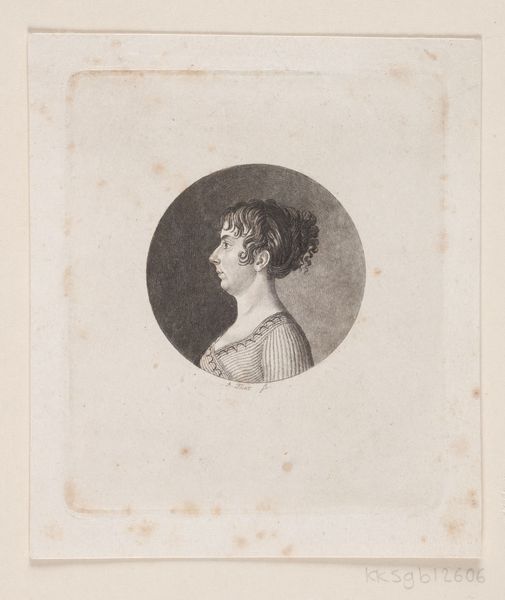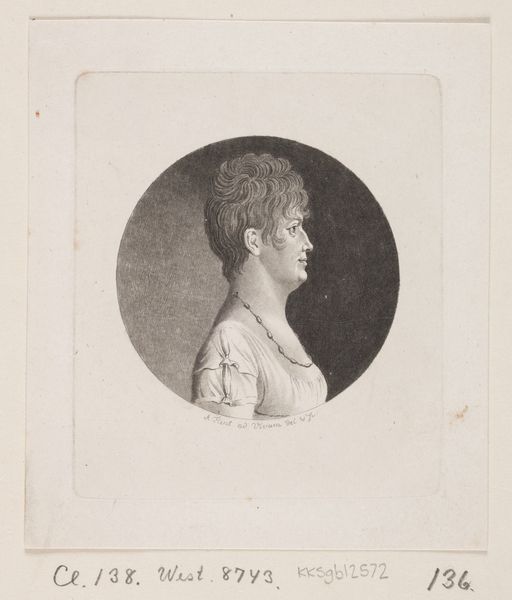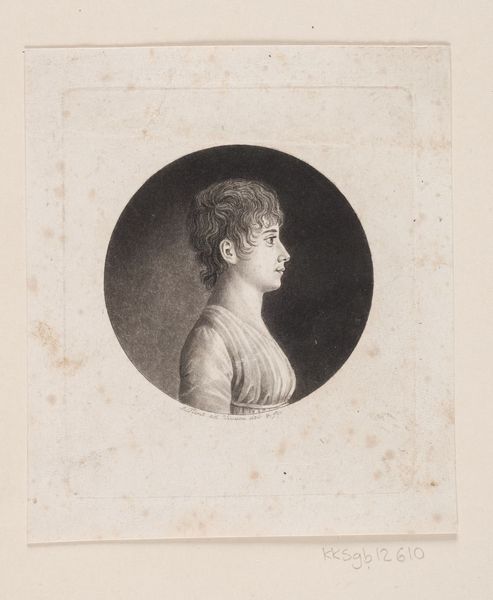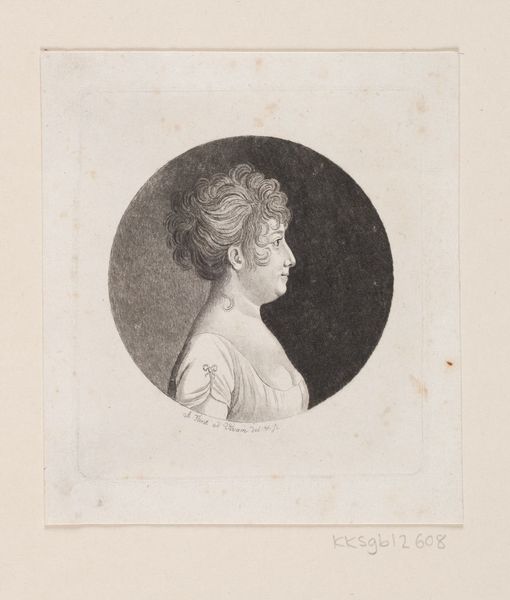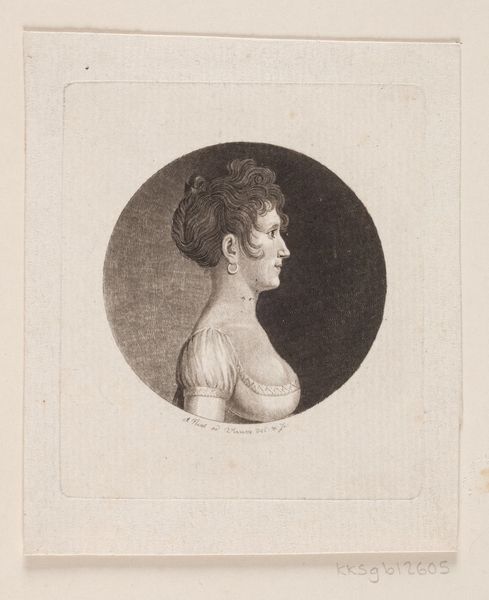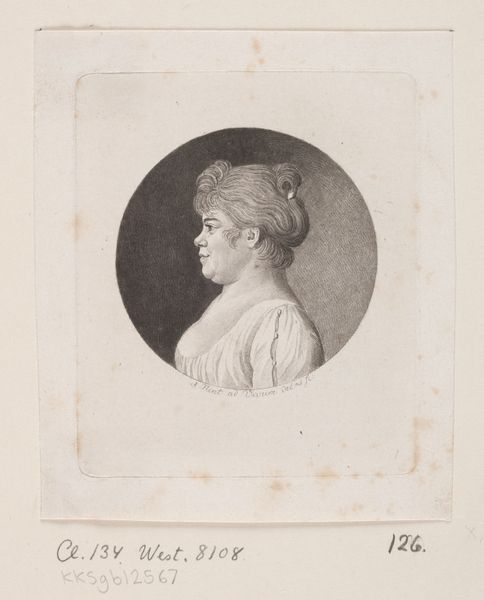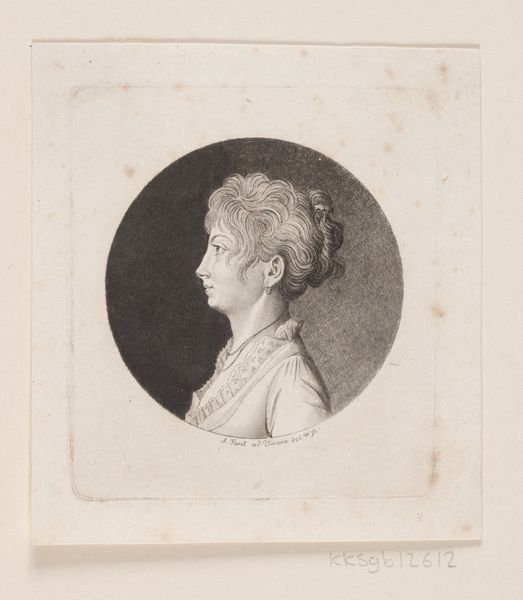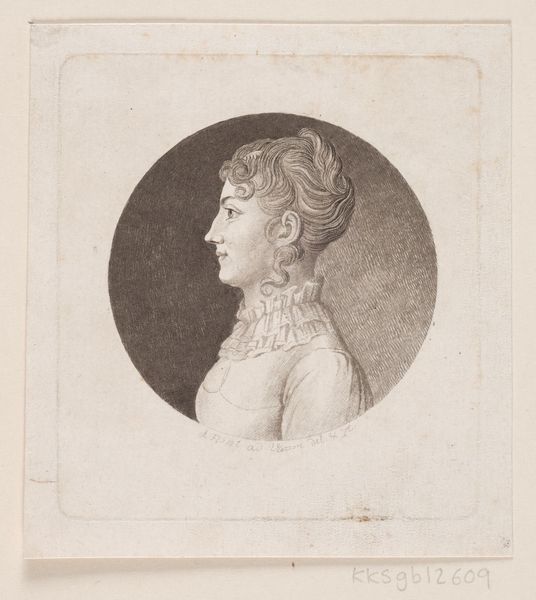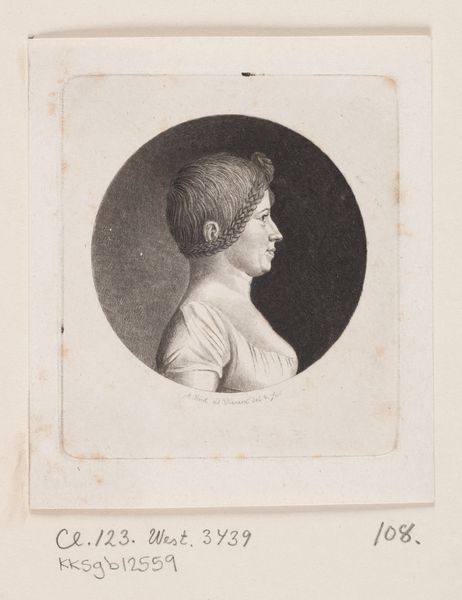
print, etching, engraving
#
portrait
#
neoclassicism
# print
#
etching
#
engraving
Dimensions: 60 mm (None) (billedmaal), 92 mm (height) x 79 mm (width) (plademaal)
Curator: Here we have "Unknown Woman's Portrait," created sometime between 1767 and 1824, a fascinating print incorporating etching and engraving techniques, currently residing here at the SMK. Editor: It strikes me as almost severe, even in its small scale. The dark, solid background really emphasizes the clean lines of her profile. There is such rigid geometry that still somehow manages to be offset with the gentleness of the subject matter. Curator: Exactly. I think the materials really contribute to that feeling. Etching and engraving as printmaking methods would have required considerable skill and labor at the time, affecting not just the image, but also influencing access and affordability for the rising middle class. Editor: Tell me more. I’m intrigued by how such precision is achieved. Look at the intricate way the artist has rendered her hair – those tiny, deliberate strokes to convey volume and texture, all framed against that dark void. And then her gaze, directed just slightly upward—it conveys such purpose. Curator: Precisely. The engraver's workshop was a commercial hub. These portraits served multiple purposes, from circulating likenesses to demonstrating social status, they also acted as templates of idealized femininity for a rapidly changing world. Who would have purchased it? Who might the sitter have been? Editor: From a purely compositional viewpoint, that severe, solid circle makes for an incredibly powerful image. There's a real dialogue between geometric abstraction and realistic depiction; that simple, almost Platonic shape focuses all attention onto her silhouette. The way the curves of her body are outlined, but only subtly, with shading instead of any defined contours - very classical! Curator: The fact that we don't know her name speaks volumes about the erasure of so many women from history. I am reminded of Walter Benjamin's writings on art's reproducibility and how it transforms not only art's aura but the entire experience for the viewer. What once would have been exclusively seen and appreciated by a narrow, exclusive group, can be disseminated much more widely. Editor: So, it’s a testament to its ability to capture more than just a likeness; it conveys a timeless grace, and those simple compositional choices certainly magnify the overall impression. The reduction to essentials amplifies everything about her expression. Curator: Absolutely. By considering production and circulation, it encourages us to rethink traditional notions of portraiture and the creation of social value within rapidly changing conditions. Editor: It seems simplicity, born from craft, elevates form and likeness so vividly that, regardless of social implication, the sitter’s timeless expression pierces through all limitations.
Comments
No comments
Be the first to comment and join the conversation on the ultimate creative platform.
